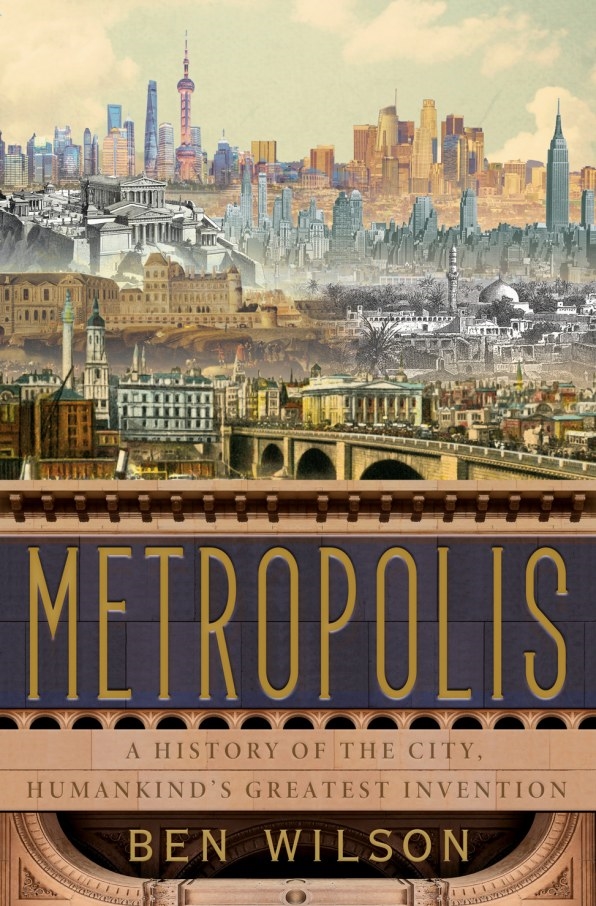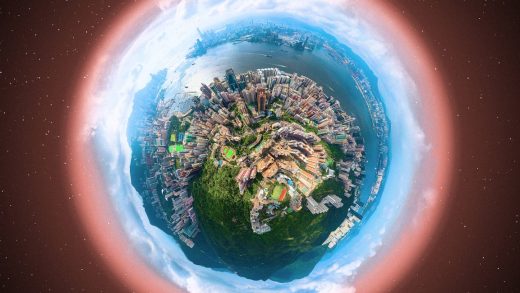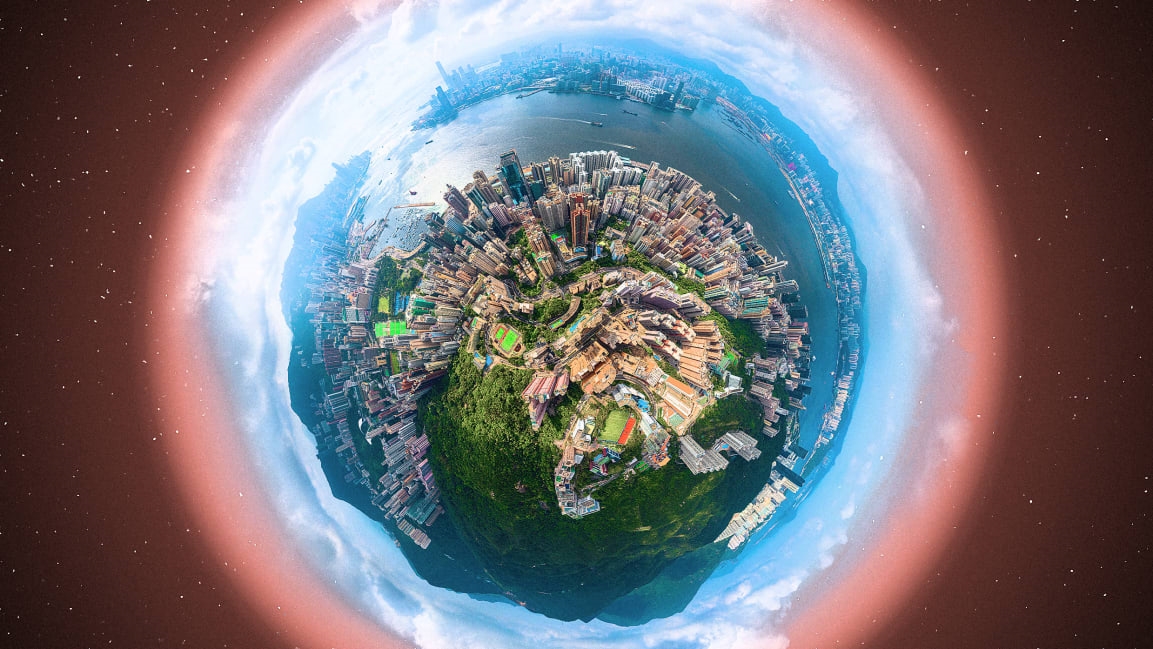The problem for the 21st century isn’t that we’re too urban—it’s that we’re not urban enough
Today, the world’s urban population grew by close to 200,000 people. It will do the same tomorrow, and the next day, and so on into the future. Two-thirds of humanity will live in cities by 2050. We are witnessing the greatest migration of history, the culmination of a 6,000-year process whereby we will have become an urbanized species by the end of the present century.

How and where we live is one of the most important questions we can ask ourselves. Much of what we understand about history and about our own times flows from exploring that subject. Since the first urban settlements in Mesopotamia around 4000 BC, cities have acted as gigantic information exchanges; the dynamic interaction of people in the dense, cramped metropolis has generated the ideas and techniques, revolutions and innovations that have driven history. Until the year 1800, no more than 3%–5% of the global population lived in sizable urban areas; but this tiny minority had a disproportionate effect on global development. Cities have always been humankind’s laboratories, the forcing houses of history. Drawn by the magnetic power of the city—like so many millions every single week—I began researching and writing Metropolis with this premise: that our past and our future are bound up, for good and ill, with the city.
Today, cities are spiking upwards even while conquering new territory. The old division between city center and suburb has broken down. Far from being the monolithic, dull places of cliché, many suburbs have become steadily more urban since the 1980s with jobs, greater ethnic diversity, street life, crime epidemics and drug abuse—in other words, inheriting many of the virtues and vices of the inner city. When we talk about “the metropolis” in the 21st century, we are not talking about the central business district of Manhattan or central Tokyo—the classic idea of where power and wealth reside—but of vast interconnected regions where cities melt into other cities.
And even while people are intoxicated by the shimmering vision of newly assertive cities, the future lifestyles of the majority of our species can be seen more readily in the super-dense, self-built and self-organized areas of Mumbai or Nairobi than in the gleaming central districts of Shanghai or Seoul or the lavish sprawl of Houston or Atlanta. Today, 1 billion people—one out of every four city-dwellers—lives in a slum, shanty town, favela, barrio, or whatever name is given to these kinds of unplanned, self-built urban areas. Some 61% of the global workforce—2 billion people— make their living off the books, many of them feeding, clothing and housing expanding urban populations.
Only by understanding the stupendous range of the urban experience through time and across cultures can we begin to grapple with one of the biggest challenges of the third millennium. Cities have never been perfect and can never be made so. Indeed, much of the pleasure and dynamism of cities comes from their spatial messiness. By that I mean the diversity of buildings, people and activities jumbled up together and forced into interaction. Orderliness is essentially anti-urban. What makes a city compelling is its incremental development—the process by which it has been built, and rebuilt, from the ground up over the generations producing a densely woven, rich urban fabric.
This messiness lies at the heart of what it is to be urban. Think of a city like Hong Kong or Tokyo, where skyscrapers tower above streets teeming with pedestrians, markets, restaurants, laundries, bars, cafés, light industry and workshops. Or think of a slum like Mumbai’s Dharavi, a cacophonous megacity which is a scene of continual, frenetic street-level activity—one that provides all basic needs within a short distance. Then think of the modern cities across the world, where retail, light industry, residential areas and offices are rigorously separated. In many cases, this sorting of functions into discrete districts has the effect of sanitizing cities, making them neat and tidy but drained of energy. Planning can have this effect. So do cars. The advent of mass car-ownership has fundamentally reshaped cities. Expressways not only facilitated suburbanization and out-of-town retail, but within city centers wide, busy roads and acres of car parking helped to kill off what remained of street life.
When we talk of over 50% of the world’s population being urbanized, we may well be falling into an error. A large proportion of modern urbanites don’t live urban or urbane lifestyles—if by that we mean that they live in walkable neighborhoods, have easy access to culture, entertainment, recreation, employment, public spaces and markets. Many of the 50+% live sub-urban lifestyles, be it in glitzy single-family homes surrounded by lawns or in so-called “arrival cities”—squatter camps clinging onto the edge of fast-developing metropolises.
The problem for the 21st century is not that we are becoming urban too quickly, but that we are not becoming urban enough. Why does this matter? It would not if we could be as lavish with our planet as we liked. The fact that 200,000 people are streaming into cities every day—or that we became a majority urban species around 2010—is eye-catching. But it does not tell the full story. Much more alarming is the knowledge that while the urban population is set to double between 2000 and 2030, the area occupied by the concrete jungle will triple. During those three decades alone, we will have extended our urban footprint by an area equivalent to the size of South Africa.
This global urban sprawl is pushing our cities into wetlands, wildernesses, rainforests, estuaries, mangrove forests, floodplains and agricultural land—with devastating consequences for biodiversity and the climate. Mountains are literally being moved to make way for this epic splurge of urbanization.
Chinese cities—like American ones before them—are becoming less dense in their cores as roads and office developments force people out of tightly packed, mixed-use urban neighborhoods to the suburbs. When people get richer, they demand more living space. If Chinese and Indian city-dwellers choose to live at the generous densities of Americans, their vehicle use and energy demands will increase global carbon emissions by 139%.
Our cities are at the front line of looming environmental catastrophe; for that very reason they could be at the forefront of mitigating the effects of climate change. One of the most remarkable things about cities is their ability to metamorphose. Cities have adapted throughout history to climatic changes, shifting trade routes, changing technologies, wars, disease and political upheaval. The great pandemics of the 19th century, for instance, shaped modern cities because they forced developments in civil engineering, sanitation and urban planning. The pandemics of the 21st century will change cities in ways we cannot begin to imagine.
Functional and resourceful communities can help make cities more resilient precisely at a time when we need resilient, adaptable cities ready to face serious new challenges of climate change and pandemics. This kind of solution calls for an urbanization of life on a truly massive scale. Above all, it requires widening our imaginations to embrace the diversity of what cities can be. History is a vital way of opening our eyes to the full range of the urban experience.
From Metropolis: A History of the City, Humankind’s Greatest Invention by Ben Wilson. Copyright © 2020 by Ben Wilson. Published by arrangement with Doubleday, an imprint of The Knopf Doubleday Group, a division of Penguin Random House LLC.
(37)



